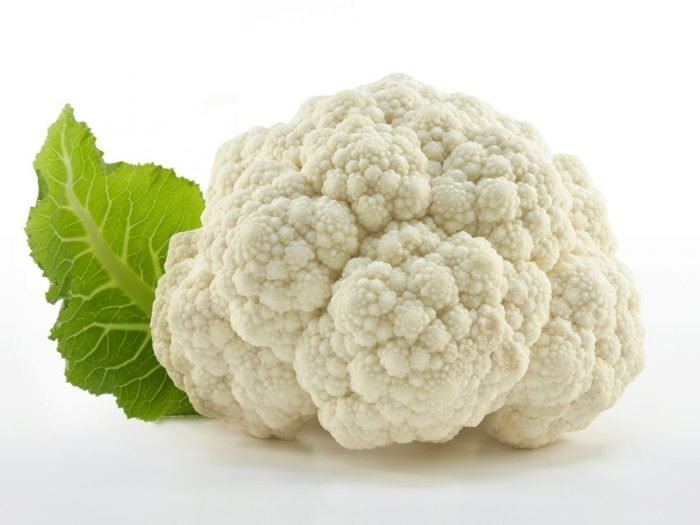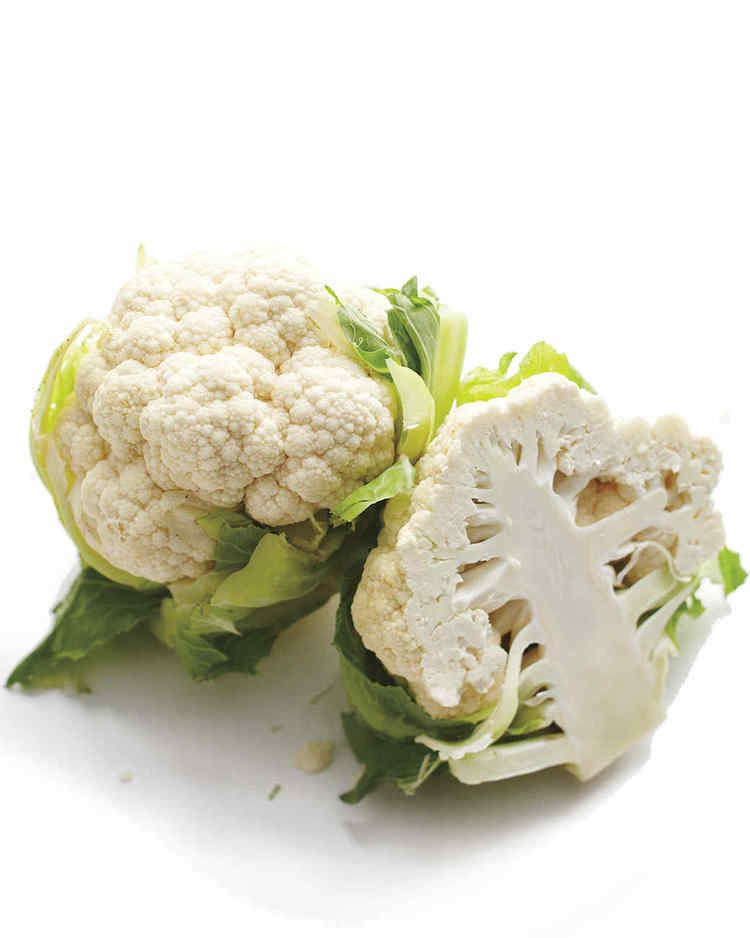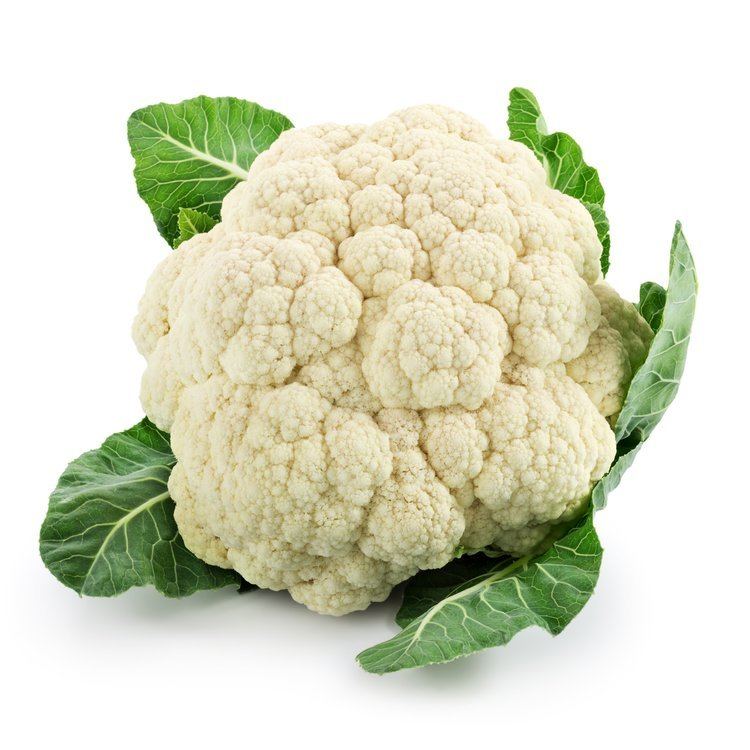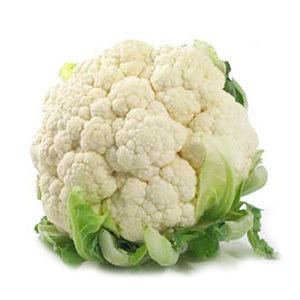Cultivar group members Many; see text. | Cultivar group Botrytis Group | |
 | ||
Origin Northeast Mediterranean Similar Broccoli, Vegetable, Cabbage, Spinach, Carrot | ||
Gobi masala cauliflower curry
Cauliflower is one of several vegetables in the species Brassica oleracea in the genus Brassica, which is in the family Brassicaceae. It is an annual plant that reproduces by seed. Typically, only the head is eaten – the edible white flesh sometimes called "curd" (similar appearance to cheese curd). The cauliflower head is composed of a white inflorescence meristem. Cauliflower heads resemble those in broccoli, which differs in having flower buds as the edible portion. Brassica oleracea also includes broccoli, brussels sprouts, cabbage, collard greens, and kale, collectively called "cole" crops, though they are of different cultivar groups.
Contents
- Gobi masala cauliflower curry
- Gobhi ki sabzi cauliflower stir fry indian veg recipe indian main course recipe
- History
- Etymology
- Horticulture
- Climate
- Seeding and transplanting
- Disorders pests and diseases
- Harvesting
- Major groups
- Varieties
- Colours
- Production
- Nutrition
- Phytochemicals
- Cooking
- Fractal dimension
- References

Gobhi ki sabzi cauliflower stir fry indian veg recipe indian main course recipe
History

The oldest record of cauliflower dates back to the 6th century B.C. In the 1st century AD, Pliny included what he called cyma among his descriptions of cultivated plants in Natural History: "Ex omnibus brassicae generibus suavissima est cyma," ("Of all the varieties of cabbage the most pleasant-tasted is cyma"). Pliny's descriptions likely refer to the flowering heads of an earlier cultivated variety of Brassica oleracea, but comes close to describing modern cauliflower. In the 12th century, three varieties were described in Spain as introductions from Syria, where it had doubtless been grown for more than a thousand years. It is found in the writings of the Arab botanists Ibn al-'Awwam and Ibn al-Baitar, in the 12th and 13th centuries when its origins were said to be Cyprus.

François Pierre La Varenne employed chouxfleurs in Le cuisinier françois. They were introduced to France from Genoa in the 16th century, and are featured in Olivier de Serres' Théâtre de l'agriculture (1600), as cauli-fiori "as the Italians call it, which are still rather rare in France; they hold an honorable place in the garden because of their delicacy", but they did not commonly appear on grand tables until the time of Louis XIV. It was introduced in India in 1822 from England by the British.
Etymology
The origin of the name is from the Latin word caulis (cabbage) and flower.
Horticulture

Cauliflower is relatively difficult to grow compared to cabbage, with common problems such as an underdeveloped head and poor curd quality.
Climate

As weather is a limiting factor for producing cauliflower, the plant grows best in cool daytime temperatures 70–85 °F (21–29 °C), with plentiful sun, and moist soil conditions high in organic matter and sandy soils. The earliest maturity possible for cauliflower is 7 to 12 weeks from transplanting. In the northern hemisphere, fall season plantings in July may enable harvesting before autumn frost.
Long periods of sun exposure in summer hot weather may cause cauliflower heads to discolor with a red-purple hue.
Seeding and transplanting
Transplantable cauliflowers can be produced in containers as flats, hotbeds, or in the field. In soil that is loose, well-drained and fertile, field seedlings are shallow-planted 0.5 inches (1.3 cm) and thinned by ample space (about 12 plants per 1 foot (30 cm). Ideal growing temperatures are about 65 °F (18 °C) when seedlings are 25 to 35 days old. Applications of fertilizer to developing seedlings begins when leaves appear, usually with a starter solution weekly.
Transplanting to the field normally begins late spring and may continue until mid-summer. Row spacing is about 15–18 inches (38–46 cm). Rapid vegetative growth after transplanting may benefit from such procedures as avoiding spring frosts, using starter solutions high in phosphorus, irrigating weekly, and applying fertilizer.
Disorders, pests and diseases
The most important disorders affecting cauliflower quality are a hollow stem, stunted head growth or buttoning, ricing, browning and leaf-tip burn. Among major pests affecting cauliflower are aphids, root maggots, cutworms, moths, and flea beetles. The plant is susceptible to black rot, black leg, club root, black leaf spot, and downy mildew.
Harvesting
When cauliflower is mature, heads appear as clear white, compact, and 6–8 inches (15–20 cm) in diameter, and should be cooled shortly after harvest. Forced air cooling to remove heat from the field during hot weather may be needed for optimal preservation. Short-term storage is possible using cool, high-humidity storage conditions.
Major groups
There are four major groups of cauliflower.
Varieties
There are hundreds of historic and current commercial varieties used around the world. A comprehensive list of about 80 North American varieties is maintained at North Carolina State University.
Colours
Production
In 2014, global production of cauliflowers (combined for production reports with broccoli) was 24.2 million tonnes, an 8% increase over 2013 world production. China and India together accounted for 74% of the total (table). Secondary producers, having 0.5–1.2 million tonnes annually, were the United States, Spain, Mexico and Italy.
Nutrition
100 grams of raw white cauliflower provides 25 calories, is low in fat, carbohydrates, dietary fiber and protein (table). It has a high content (20% or more of the Daily Value, DV) of vitamin C and moderate levels (10-19% DV) of several B vitamins and vitamin K (table).
Phytochemicals
Cauliflower contains several phytochemicals, common in the cabbage family, that are under preliminary research for their potential properties, including isothiocyanates and glucosinolates.
Boiling reduces the levels of cauliflower compounds, with losses of 20–30% after five minutes, 40–50% after ten minutes, and 75% after thirty minutes. However, other preparation methods, such as steaming, microwaving, and stir frying, have no significant effect on the compounds.
Cooking
Cauliflower heads can be roasted, boiled, fried, steamed, pickled, or eaten raw. When cooking, the outer leaves and thick stalks are typically removed, leaving only the florets (the edible "curd" or "head"). The leaves are also edible, but are most often discarded. The florets should be broken into similar-sized pieces so they are cooked evenly. After eight minutes of steaming, or five minutes of boiling, the florets should be soft, but not mushy (depending on size). Stirring while cooking can break the florets into smaller, uneven pieces.
Low carbohydrate dieters can use cauliflower as a reasonable substitute for potatoes or rice; while they can produce a similar texture, or mouth feel, they lack the starch of the originals. Like certain legumes (including chickpeas), it can be turned into a flour from which such foods as pizza or biscuits are made.
Fractal dimension
Cauliflower has been noticed by mathematicians for its distinct fractal dimension, predicted to be about 2.8. One of the fractal properties of cauliflower is that every branch, or "module", is similar to the entire cauliflower. Another quality, also present in other plant species, is that the angle between "modules," as they become more distant from the center, is 360 degrees divided by the golden ratio.
